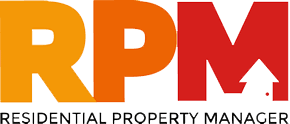Your software is an integral part of your business and changing systems can cause massive issues for your business if not done correctly. Here’s how you can ensure your change is both easy and safe.
PMS are central to any property management business and as businesses do not change systems regularly or have the necessary skills to make it happen smoothly, it is important to engage a qualified consultant.
Today, cloud technology is making the implementation process faster and more affordable. This is even more so when choosing a cloud software provider that can convert data from most other PMS.
Due diligence is necessary to ensure the proposed system meets your requirements. This should include speaking to other users of the system.
Here are some of the considerations any good consultant will consider and advise you on when converting systems.
1. When is the ideal time to change systems?
The neatest solution is to have a ‘go live’ date of 1 July. Depending on the size of the portfolio, this often means planning the conversion in May to complete a smooth transition. The beginning of the financial year means that year-to-date figures or current financial year transactions do not need to be ported across.
Having said that, this is the busiest time of the year for property managers with budget preparations, year- end reporting and variable outgoing reconciliations. Adding any extra workload, including training, may not go down well with property managers. Any other quieter month could feasibly be chosen as a go live date.
2. Will staff be able to easily adapt?
An important consideration is the management of change within the organisation. Changing to a cloud-based system may mean changing procedures as well. For example, saving tenant invoices and lease documents online rather than printing and filing. Key staff need to be brought into the decision to change early to get their buy-in. They need to be shown the benefits to them and not see the change as being just another burden.
3. Level of training and support with the new system
Any new system will only operate as well as users are able to use its capabilities. Training is essential and should not be minimised to save costs. It is best to agree to a fixed cost for the training and to ensure this covers the training after go live right through to the first month end.
4. How is information going to be migrated
This is an important consideration. The various options are to enter the information manually in the new system (not viable for large portfolios), import the information or use a conversion program. Proprietors should have a clear understanding of the quality of the information in the old system so they can decide whether a cleanse of the data is necessary.
5. To do the migration internally or outsource it
Handling the migration internally can have the perception of saving money. However, this often backfires. This decision can place another burden on staff who may already be struggling with a full workload. Deadlines are also seldom met when migration is done internally. This adds to the cost of the conversion and can lead to an extended period of running two systems in parallel. The other option is to outsource the conversion to qualified consultants who will ensure the project is delivered on time and within budget.
6. Whether to run two systems in parallel for a period
Running two systems in parallel approximately trebles the workload during this period. The reason for this is not only the double processing of information but the time-consuming task of maintaining the two systems in sync. This is an outdated mode of conversion and only recommended when there is a lack of confidence in the new system to make a clean changeover or if the proprietor is extremely conservative. This is the most expensive method of conversion and requires the greatest human resources to undertake.
7. Will historical information be able to be migrated across to the new system?
Historical information often contains a lot of old and irrelevant information that will never be used. Migrating to a new system often brings an opportunity for a fresh start by having accurate data that is not corrupted by possible erroneous information. Bringing all historical information across to a new system also makes the database that much bigger and less manageable.
You should consider your legal obligations to owners for retaining financial information. There is a school of thought that by providing owners with financial information on a monthly basis, you are absolving yourself of retaining tax information for five years.
Given that you would like to maintain access to historical information, you can ask your current provider to provide read-only access to the data or utilise the conversion services of a provider to convert information across to your new system.
Checklist for the conversion
• Upfront training and practice on a test system
• Transfer closing bank balances
• Bring on tenant arrears balances
• Bring on unpaid supplier invoices
• Prepare an opening bank reconciliation that agrees with the old system bank reconciliation
• Prepare tenant charges from the new system
• Is a cleanse of the data required?
Things to be aware of
• BAS (GST) reporting to owners in the first reporting period
• Auditors being comfortable with the integrity of the change in systems
• Treatment of management fees on receipts
• How to deal with tenant prepayments during changeover
• How to bring across year-to-date income and expenses if transition date is anything other than 1 July
• Change management of staff
• Ensure you have a strong project manager who has considerable experience in implementing new PMS
• Whether to run two systems in parallel








You are not authorised to post comments.
Comments will undergo moderation before they get published.